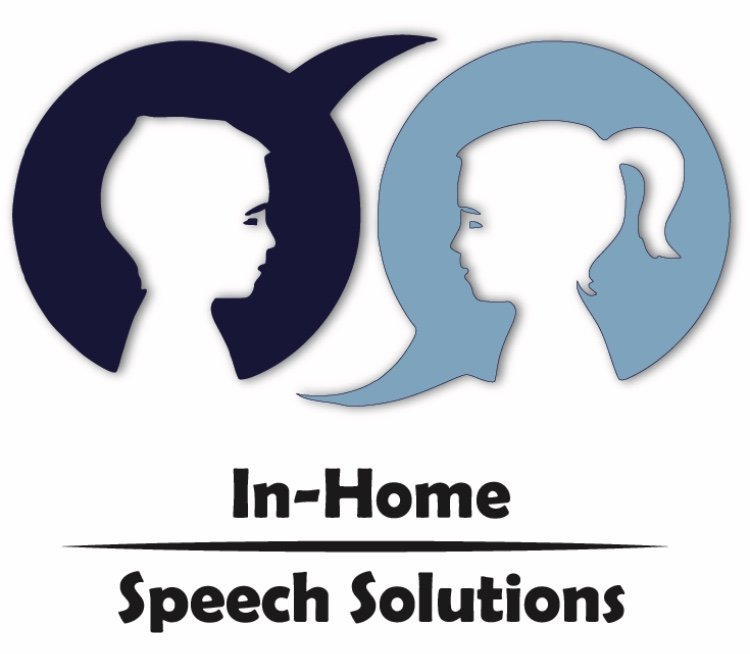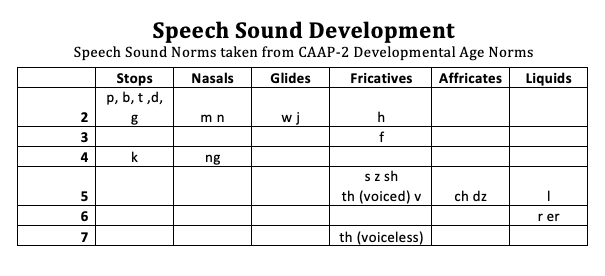
Typical Developmental Milestones
We know every child is unique and develops at his or her own pace. However, there are standard speech and language developmental milestones to look for at every age. Research consistently shows that if there are any concerns, it is always best to seek the advice of a professional speech-language pathologist as early as possible. The sooner intervention can begin, the better the outcome.
This is a brief list of speech and language milestones for birth through five years. For more detailed information, visit the American Speech and Language Association.
3 Months
Startles at loud sounds.
Quiets or smiles when you talk.
Makes cooing sounds.
6 Months
Responds to changes in your tone of voice.
Makes sounds when happy or upset.
Makes speech-like babbling sounds, like pa, ba, mi.
Recognizes common items like “cup”, “shoe”, or “book”.
Starts to respond to simple words and phrases, like “No,” “Come here,” and “Want more?”.
When to Contact a Speech-Language Pathologist
Child doesn’t respond to noises.
Child is not babbling (consonant-vowel combinations) by 9 months.
12 to 24 Months
Follows 1-part directions, like "Roll the ball" or "Kiss the baby."
Responds to simple questions, like “Who’s that?” or “Where’s your shoe?
Uses a lot of new words.
Uses p, b, m, h, and w in words.
When to Contact a Speech-Language Pathologist
Child does not respond to his name.
Child has 10 words or less by 18 months.
Child is not using two word phrases by 24 months.
2 to 3 Years
Understands opposites, like go–stop, big–little, and up–down.
Follows 2-part directions, like "Get the spoon and put it on the table.
Uses k, g, f, t, d, and n in words.
Uses words like in, on, and under.
Uses two- or three- words to talk about and ask for things.
Puts 3 words together to talk about things. May repeat some words and sounds.
When to Contact a Speech-Language Pathologist
Child has does not follow 2 part directions.
Child does not put 2 weeks together to talk about things.
Child does not use k, g, f, t, d, and n in words.
3 to 4 Years
Understands words for some colors, shapes, and family members (i.e. square, red, and brother).
Responds when you call from another room.
Answers simple who, what, where, and where questions.
Puts 4 words together. May make some mistakes, like “I goed to school.”
Most people understand what your child says.
When to Contact a Speech-Language Pathologist
Child does not understand colors, shapes, and family members.
Does not put 4 words together.
Others have difficulty understanding your child.
4 to 5 Years
Understands words for order (i.e. first, next) and time (i.e. yesterday, today).Follow longer directions, like “Put your pajamas on, brush your teeth, and then pick out a book.”
Says all speech sounds in words. May make mistakes on sounds that are harder to say, like l, s, r, v, z, ch, sh, and th.
Uses sentences that have more than 1 action word, like jump, play, and get. May make some mistakes, like “Zach gots 2 video games, but I got one.”
Tells a short story.
Keeps a conversation going.
When to Contact a Speech-Language Pathologist
Child has difficulty following longer directions.
Child does not use sentences with more than one action.
Child had difficulty keeping a conversation going.

Helpful Websites
Florida Early Childhood Intervention Services
Do you have questions?
Find your answers on our frequently asked questions page!


